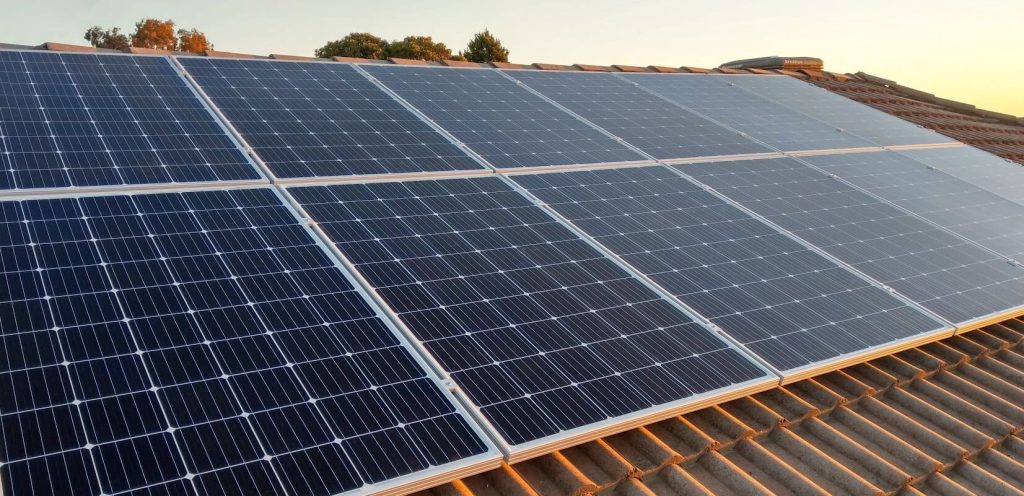Did you know that 3.4% of U.S. electricity is from solar energy? The solar panel industry is booming and for good reason. Switching to solar energy can save you a lot of money, and it’s good for the Earth. Solar panels are now more affordable than ever with rebates and incentives. You’ll have to decide what system to install. One of the most important decisions will be your choice of solar panels. Stick around as we explain the difference between series vs parallel solar panels.
Difference Between Series vs Parallel Solar Panels
Electrical Capacities
Series and parallel solar panels are connected in different ways. This results in various electrical capacities.
Series connections have panels connected in a line. It increases the voltage but not the amperage. This results in higher voltage but lower amperage output.
Parallel connections have the panels connected side-by-side. It increases the amperage but not the voltage. This results in lower voltage but higher amperage output.
Parallel connection is usually the preferred way to connect multiple solar panels. This is because it increases the overall capacity of the system.
Series solar panel connections are used when you have a high voltage requirement. Series and parallel solar panel connections both have their advantages and disadvantages.
Read This: Is My House Right For Solar?
The choice between series and parallel solar panels comes down to the overall capacity and efficiency of the system.
Solar Panel Array Efficiency
The difference between series and parallel solar panels affects the efficiency of a solar panel. Because of the more significant number of cells wired together, parallel solar panels are more efficient. It experiences less power loss in comparison to series solar panel arrays.
The energy output can be improved by using multiple solar panel arrays connected. This depends on the needs of the system. A system’s solar panel array efficiency depends on the type of wiring used.
By understanding the difference, the array can be configured to maximize efficiency based on the current and voltage output needed. System design should be tailored to the individual situation. This will help to ensure maximum efficiency from the solar panel array.
Find out: Best Solar Energy Companies in Bakersfield, CA
Installation Process
Series solar panels are connected in a circuit where the current from one panel flows into the next. This wiring technique is typically used when solar panels are laid out in a single row across a roof. It will produce higher voltages than parallel circuits.
Parallel solar panel wiring uses multiple rows of solar panels. Each panel receives the same amount of voltage. This wiring technique for installing solar panels can be used with flat and pitched roofs. This makes it more flexible than a series circuit. Because it takes up less space on a roof, it can also be used in locations with limited real estate.
Both series and parallel wiring are suitable for powering different types of appliances, depending on the size and voltage requirements of the system. If you need installation, be sure to learn about this company.
Cost and Warranty
Regarding cost and warranty, there is a significant difference between series and parallel solar panels. Regarding cost, series solar panels are typically the more expensive option. This is due to the need to buy more hardware.
However, the benefit is that they produce higher power output. This means you’ll need fewer panels to achieve the same result.
In terms of warranty, series solar panels offer longer and more comprehensive warranties than their parallel counterparts. This is because the components within the panels have a longer lifespan and less risk of malfunction due to how they are wired.
So while series solar panels are generally more expensive up front, they come with greater peace of mind and ultimately represent a better long-term investment.
Read This: What are The Advantages and Disadvantages of Using Solar Energy
Difference on Durability
Durability is an essential factor to consider when deciding whether to use series vs parallel solar panels. Series solar panels are typically more durable than parallel solar panels. This is because series solar panels are connected to send a higher voltage output which must remain consistent to work.
On the other hand, parallel solar panels are connected in a way that allows more current to be sent throughout them. However, the connection between each solar panel is weaker than the series, and the output current tends to be affected by voltage/power fluctuations.
In addition, series solar panels take up less space since they connect in line, while parallel solar panels can be spread out into a larger area. As a result, series solar panels have a better overall fit and finish, which is essential for a durable design.
Battery Charging
The difference between series vs parallel solar panels is an essential consideration regarding solar panel battery charging. Series solar panels create a higher voltage output. This means they can more efficiently charge higher-voltage batteries, such as 12V, 24V, or 48V batteries.
Parallel solar panels create a lower voltage but much higher amperage output. It provides the same total power as a series solar panel but in a shorter time frame. This makes them more suitable for charging lower-voltage batteries and is generally more affordable than series solar panels.
When choosing between series and parallel solar panels, you should consider the battery voltage you want to charge and the budget you’re working to.
Parts Needed
Series vs Parallel solar panels are a crucial factor when utilizing solar energy. Series solar panels require fewer parts, as only one controller and one battery are needed.
In a series configuration, multiple solar panels are wired up in a line where electrons flow from one solar panel to the next. This configuration requires one positive and one negative wire and a series of MC4 connectors.
Parallel solar panels require more parts, each needing a dedicated controller and battery. In a parallel configuration, multiple solar panels are wired up together, and each panel’s positive and negative terminals are directly connected.
Both series and parallel solar panels are efficient ways to store renewable energy, but they require different parts and an understanding of the differences between them.
Last Words
When considering the differences between series vs parallel solar panels, the most important factor is efficiency, as series produce more power than parallel. For those interested in increasing their energy efficiency, it may be time to invest in either series or parallel solar panels. Contact your certified installer to decide which type of solar panel is best for your needs.
Read Now: HUMIDIFIERS VS DEHUMIDIFIERS: WHAT ARE THE DIFFERENCES?
Michael C Vang is a passionate blogger. He has been blogging since 2013 on a variety of topics. He is committed to creating informative and engaging content that helps readers learn more about everything.



